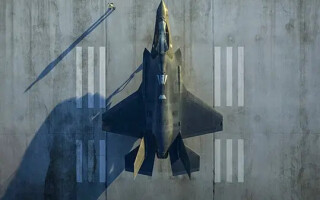Analog Devices
PO BOX 9106
Wilmington, Massachusetts 02062 [email protected]
(781) 329-4700
https://www.analog.com

Radar/EW
Empirically Based Multichannel Phase Noise Model Validated in a 16-Channel Demonstrator - Whitepaper
March 14, 2023Multichannel systems and compares it with measurements on a 16-channel S-band demonstrator.
MEMS sensors from ADI to equip smarter, safer wind turbines - News
March 13, 2023WILMINGTON, Mass. Semiconductor maker Analog Devices, Inc. (ADI) announced that green-technology company Envision Energy (Shanghai, China -- a subsidiary of Envision Group) is adopting ADI's MEMS [microelectromechanical sensor] technology in the new generation of Envision Energy smart wind turbines.
Radar/EW
Analog Devices officially opens RF/Microwave Learning Lab at UMass Lowell - News
November 08, 2022LOWELL, Mass. The University of Massachusetts Lowell (UMass Lowell) and Analog Devices, Inc. (ADI) officially opened a state-of-the-art RF/Microwave Learning Lab UMass Lowell on November 7, a facility that will enable UMass Lowell to embed cutting-edge technology within engineering students’ educational interactions.
Radar/EW
New Radar Receiver Platform from Analog Devices at AOC 2022 - Video
October 26, 2022Nikhil Ahuja, applications engineer at Analog Devices, talks with om Varcie from Military Embedded Systems at #AOC2022 about their new Radar Receiver Platform.
Analog Devices demos solutions for system integrators at AOC 2022 - News
October 25, 202259th AOC INTERNATIONAL SYMPOSIUM & CONVENTION, WASHINGTON, DC. Engineers from Analog Devices Inc. (ADI) are offering demonstrations of some of its latest solutions for defense/aerospace and military electronics system designers this week at the 59th Annual Association of Old Crows (AOC) International Symposium & Convention.
Analog Devices and Keysight Technologies Join Forces to Advance the Adoption of Phased Array Technology - Press Release
October 13, 2022Analog Devices, Inc (Nasdaq: ADI) and Keysight Technologies, Inc. (NYSE: KEYS) today announced their collaboration to advance the adoption of phased array technology. This technology is key to realizing ubiquitous connectivity and sensing by simplifying development stages associated with creating satellite communication, radar, and phased array systems.








